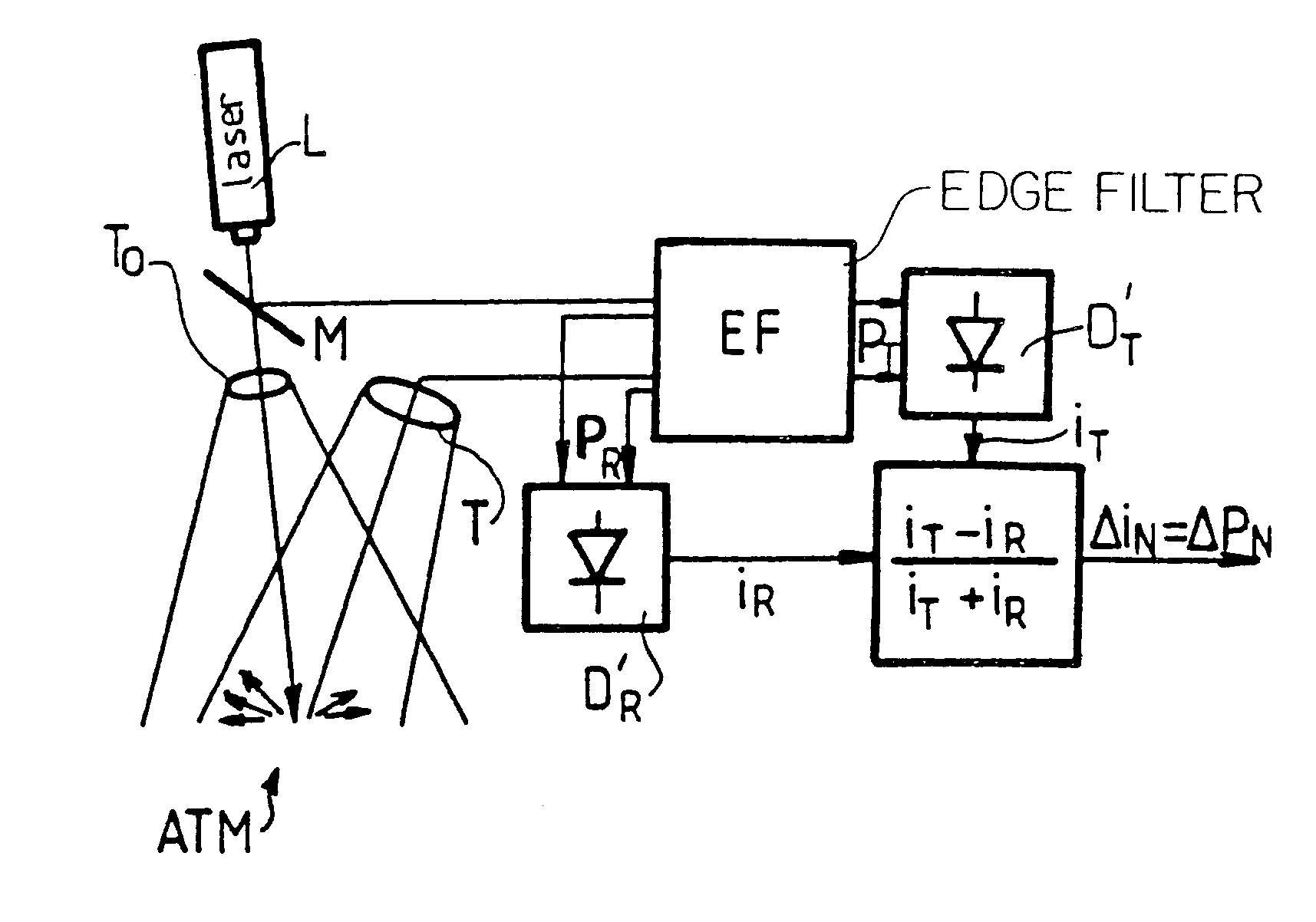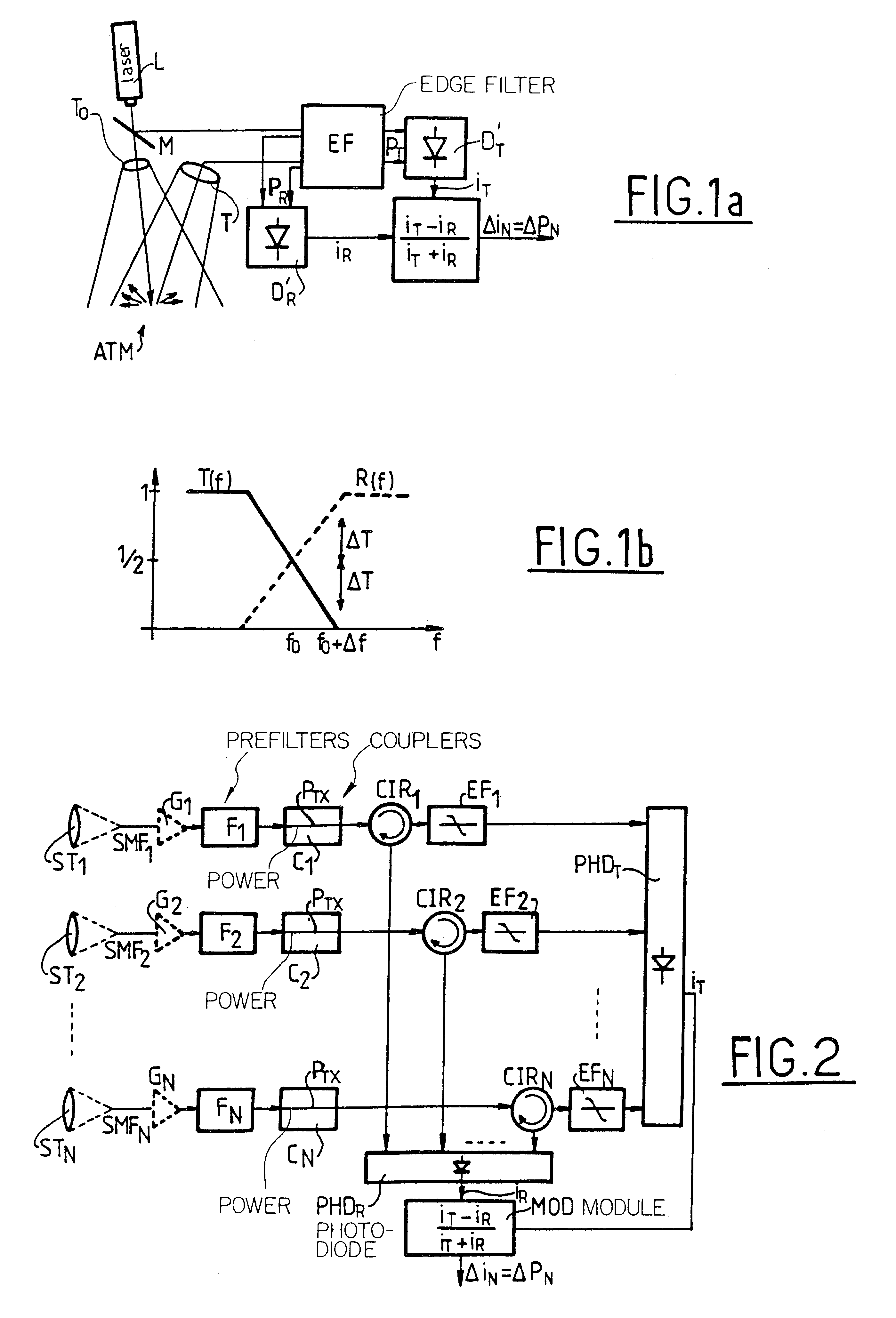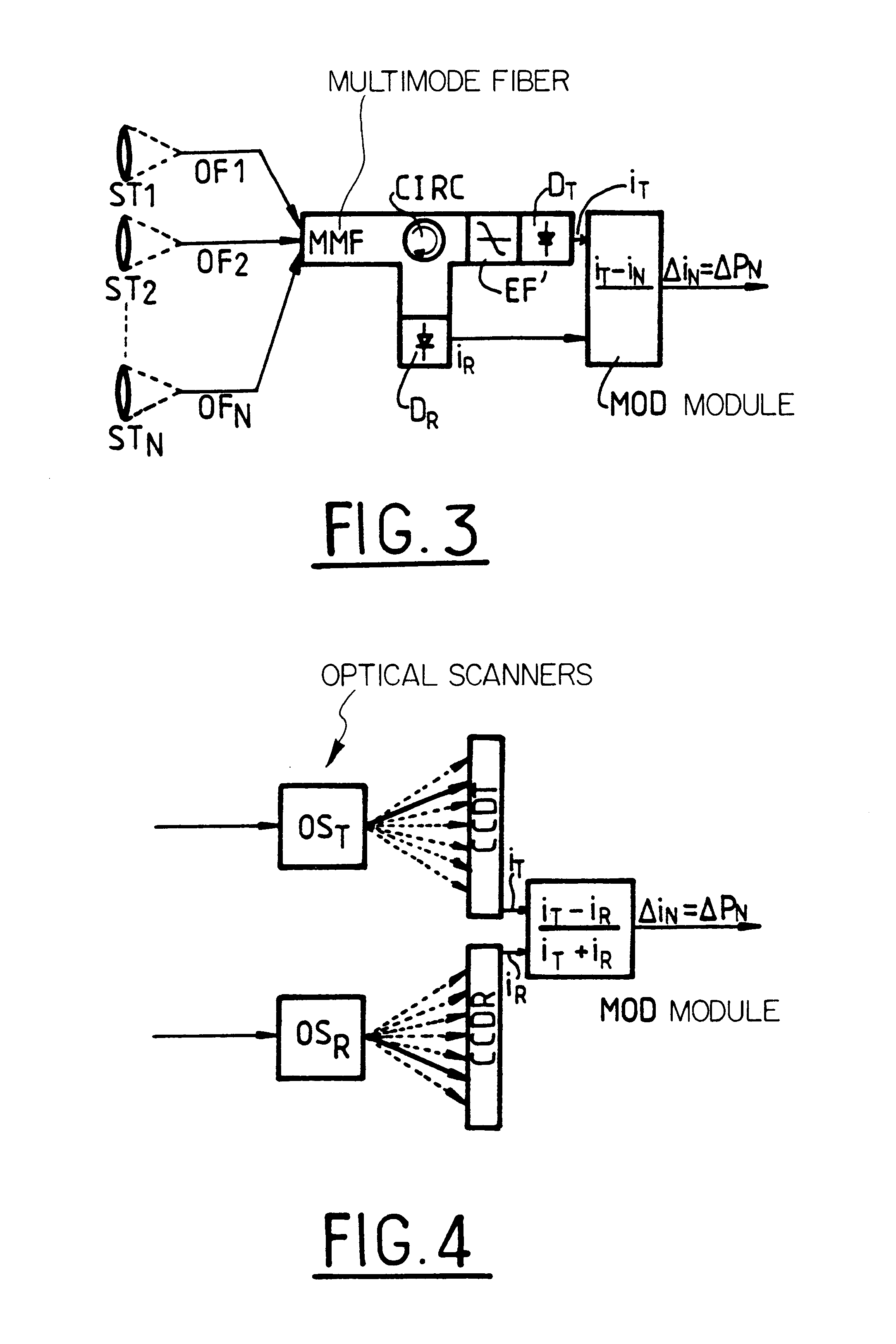Incoherent doppler laser detection and ranging system
a laser telescope and incoherent technology, applied in the field of incoherent laser telescope systems, can solve the problems of limited power received, limited mechanical stability of such equipment, and low amount of power received, so as to achieve better use
- Summary
- Abstract
- Description
- Claims
- Application Information
AI Technical Summary
Benefits of technology
Problems solved by technology
Method used
Image
Examples
first embodiment
the invention, described below with reference to FIG. 2, makes use of monomode fibers. It uses N individual telescopes ST.sub.1, . . . , ST.sub.N whose outlets are coupled to a corresponding number of monomode fibers SMF.sub.1, . . . , SMF.sub.N. Downstream, the apparatus is based on optical fibers and includes optical prefilters F.sub.1, . . . , F.sub.N for eliminating the background noise due to radiation and for attenuating undesirable backscattered molecular components. A description of such a filter can be found in the article by K. W. Fischer entitled "Visible wavelength Doppler Lidar for measurement of wind and aerosol profiles during day and night", published Optical Engineering No. 34, 1995, pp. 499-511. Provision can also be made for couplers C.sub.1, . . . , C.sub.N for enabling a fraction of the power P.sub.TX as emitted directly by the laser L to be introduced into the apparatus. This is required for the reference measurement only when the edge filter cannot be locked o...
PUM
 Login to View More
Login to View More Abstract
Description
Claims
Application Information
 Login to View More
Login to View More - R&D
- Intellectual Property
- Life Sciences
- Materials
- Tech Scout
- Unparalleled Data Quality
- Higher Quality Content
- 60% Fewer Hallucinations
Browse by: Latest US Patents, China's latest patents, Technical Efficacy Thesaurus, Application Domain, Technology Topic, Popular Technical Reports.
© 2025 PatSnap. All rights reserved.Legal|Privacy policy|Modern Slavery Act Transparency Statement|Sitemap|About US| Contact US: help@patsnap.com



